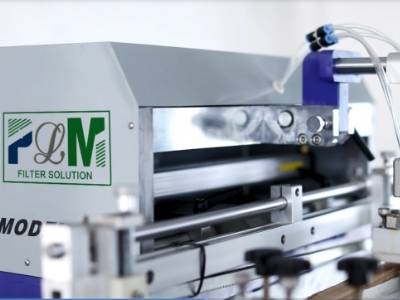With increasing global attention to air quality issues, the role of high-efficiency air filters in air purification has become more critical than ever. They are widely used across various industries, providing reliable safeguards for ensuring clean air. The dust removal principles of HEPA involve multiple physical and chemical mechanisms, including interception, inertial impaction and diffusion, electrostatic effects, gravitational settling, and chemical filtration. Here, we will delve into these dust removal principles and illustrate how we enhance filtration efficiency and system performance through high-quality filter materials and components.
Dust particles in the air typically undergo inertial motion or irregular Brownian motion under airflow forces, or are influenced by external force fields such as electric or magnetic fields. When particles come into contact with the fibers of a filter medium, intermolecular attractive forces cause them to adhere to the fiber surfaces. As particles penetrate the filter medium, frequent collisions and impacts increase their opportunities to interact with the fibers, ultimately leading to effective capture. Larger particles may form agglomerates upon collision and settle onto the medium's surface, thereby enhancing the filtration efficiency.
It is important to note that fibrous filters are not simple sieve-like structures. They do not rely on pore size to directly sieve out particles, but instead achieve high-efficiency dust removal through multiple physical mechanisms.
Dust particles exhibit distinct motion characteristics in the airflow:
- Large particles (> 0.3 μm): Mainly influenced by inertial forces. When the airflow navigates around fibers in the filter medium, large particles cannot follow the airflow's altered path due to inertia, causing them to collide with and adhere to the fiber surface.
- Small particles (< 0.1 μm): Governed by Brownian motion. Their light mass and erratic trajectories result in increased collision frequency with fibers, thereby enhancing the filtration efficiency.
- Medium particles (0.1–0.3 μm): Reside in a transition zone between inertial dominance and Brownian diffusion, resulting in relatively lower filtration efficiency. Particles in this range are typically used as a critical metric for evaluating the performance of high-efficiency filters.
In certain cases, filter materials or particles may carry a charge, leading to electrostatic adsorption effects: charged particles alter their trajectories under electrostatic forces, increasing their collision probability with fibers; Filter materials like "electret" materials, demonstrate enhanced particle-capturing capabilities, significantly improving filtration efficiency without elevating airflow resistance. The electrostatic effect serves as a supplementary mechanism in the filtration process and does not directly dictate filtration effectiveness.
For larger particles (typically above 0.5 μm), gravitational forces cause them to deviate from the airflow streamlines and settle onto fiber surfaces as they pass through the filter medium. This effect is pronounced for larger particles, but becomes negligible for those smaller than 0.5 μm. Since sub-0.5 μm particles are carried through by the airflow before gravitational settling occurs, this mechanism contributes minimally to the filtration of ultrafine particles.
Chemical filters primarily purify air by adsorbing harmful gas molecules.
- Physical adsorption: Utilizes materials like activated carbon, whose microporous structure provides an exceptionally large specific surface area. For instance, activated carbon the size of a grain of rice can exhibit an internal micropore surface area of tens of square meters. When harmful gas molecules contact the activated carbon, they are captured and immobilized within the micropores through capillary action or physical adsorption processes.
- Chemical adsorption: Employs specially treated adsorbents to trigger chemical reactions with harmful substances, converting them into harmless compounds or solid residues.
It is important to note that the adsorption capacity of activated carbon gradually diminishes over time. Once saturation is reached, the filter must be replaced or regenerated. Physical adsorption can be regenerated via heating or steam treatment, whereas chemical adsorption typically requires more complex processing.
The particle removal principles of HEPAs involve multiple physical and chemical mechanisms, each targeting pollutants of specific particle sizes. As a professional supplier of filter production equipment and components, we deliver high-efficiency, reliable filter materials and components through precision manufacturing processes and stringent quality control. Whether through customized solutions or technical support, we are committed to helping clients optimize air filtration systems, enhance overall performance, and provide robust safeguards for clean air.










